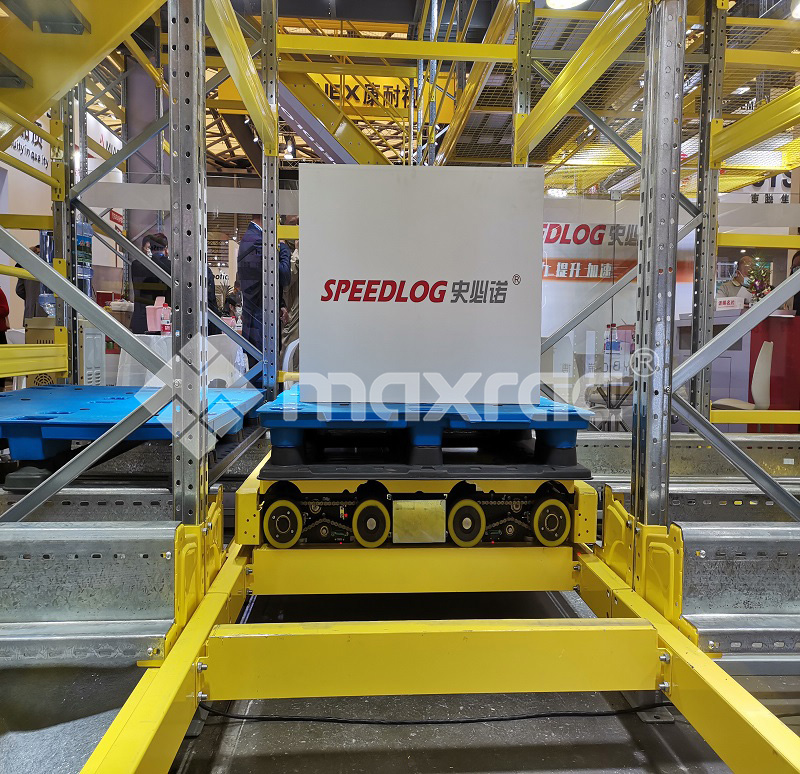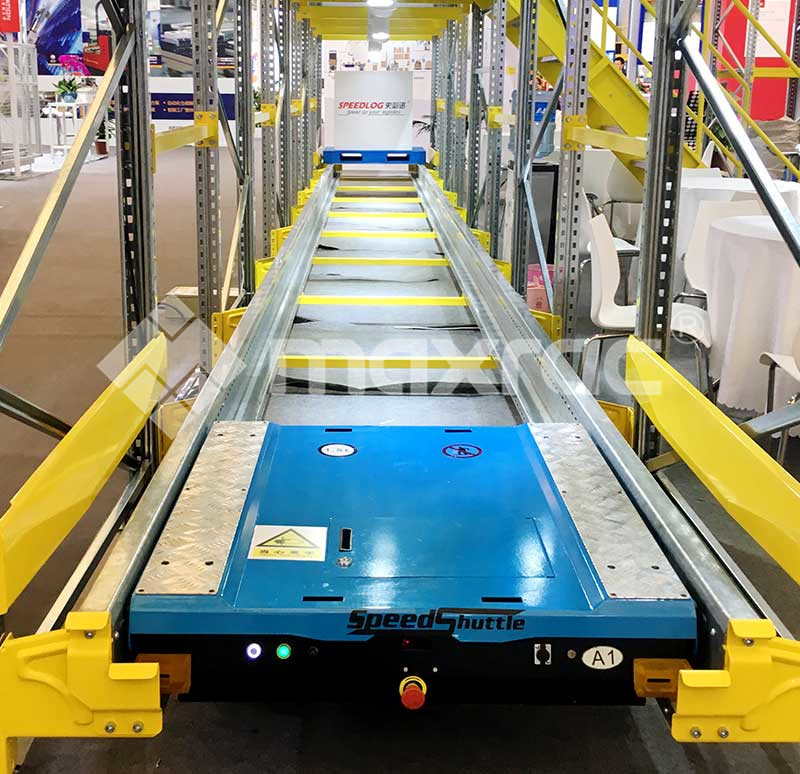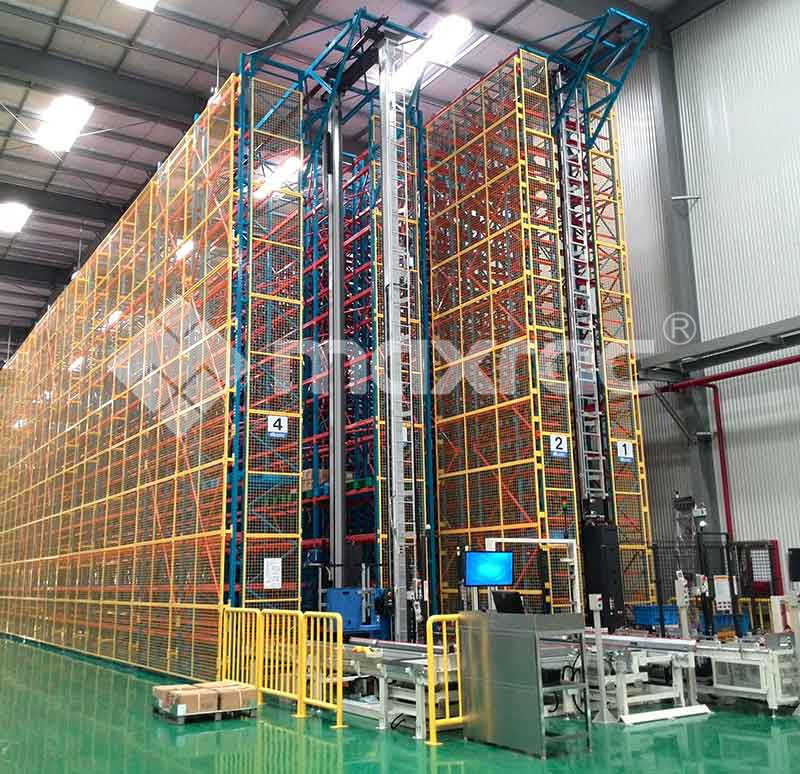On the upper levels of the warehouse, four-way shuttles use every inch of vertical space for pallet storage and the lower levels for fast, flexible replenishment. Below them, picking robots move racks, pallets and shelves containing the most needed merchandise.

Warehouse shuttle systems use one of two possible configurations: FIFO (first-in-first-out) or LIFO (last-in-first-out). It depends on whether the rack faces are accessible at only one end or both.
They are operated via remote control, radio signals or Wi-Fi. Loaded pallets are placed at one end of the rack. A human operator transmits the order to the shuttle via an appropriate signal. The shuttle vehicle picks up the loaded pallets and transports them to the first free space in the aisle.
The shuttle vehicles run on tracks integrated into the racking structure. They can change levels (i.e. rise and fall) by means of vertical conveyors or warehouse lifts that are usually located at the front of the aisle. This allows them to store and retrieve pallets on several different levels.

Radio Pallet Shuttle Rack System
Warehouse shuttle systems are particularly suited to support the following applications.
When equipped with goods-to-man picking stations, shuttle systems can serve as powerful engines for rapid fulfillment in high volume, dynamic e-commerce environments. In this application, the shuttle system stores products in totes and delivers them to stationary pickers when needed, dramatically increasing picking speed by eliminating the need for pickers to walk on the warehouse floor.
In omnichannel or dedicated retail replenishment warehouses, shuttles are ideal for supporting mixed case palletizing. Shuttle software provides the ability to release boxes or cartons based on different criteria, supporting faster manual palletizing. Shuttles can also be used with robotic palletizing systems to fully automate the palletizing process.
Shuttle is ideally suited for receiving applications that require buffering and for order consolidation in e-grocery fulfillment.
Some suppliers, such as Risig, have designed their shuttle systems to operate in a refrigerated environment, allowing for the storage and retrieval of boxes, cartons or pallets in a refrigerated warehouse to increase productivity and minimize the amount of time warehouse workers are exposed to the harsh environment environment.
Warehouse shuttle systems are automated vehicles used in place of traditional forklifts to move pallets in racking areas. They minimize the need for forklift access to driveways, reduce congestion and allow the warehouse to maximize every square inch of floor space.
Aisles can be built closer together and racks can be expanded horizontally and vertically to accommodate more pallets/SKUs. for the right product and setup, these systems are of tremendous value in increasing productivity. They improve pallet handling, which minimizes the risk of SKU and rack damage.

While warehouse shuttle systems can be valuable in certain environments, they also have a number of drawbacks. These include.
They have high maintenance requirements, and failures can lead to downtime.
They require significant upfront investment costs and dedicated operations and maintenance staff.
They are not suitable for picking operations and facilities with a large number of unique SKUs.
Whether you are looking for a warehouse automation solution to address labor shortages or improve productivity/efficiency, MAXRAC can help you. Contact us today!